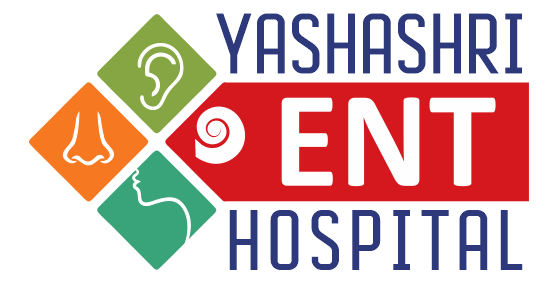AUDIOLOGY
- Pure Tone Audiometry
- Free field testing and visual reinforcement. Audiometry useful in testing infants and young children
- Immittance Audiometry: Quick screen facility – screens infant’s middle ear status within few seconds.
- Evoked Auditory Potential Measures: Most evoked potential tests do not require active subject participation. These tests (i.e., BERA, MLR, LLR, ASSR) measure electrical activity at various levels in the auditory nervous system and are a very useful diagnostic tool in both children and adults. These tests are used for
- Detection of hearing loss in neonates and infants
- Diagnosis of Auditory disorders such as
- Tumours at various levels of the auditory nervous system
- Degenerative diseases of the auditory nervous system. Ex: multiple sclerosis
- Monitoring therapy progress in children with learning disability
- Monitoring maturation of the auditory nervous system in children with cochlear implants
- OAEs – Oto Acoustic Emissions: OAEs are extremely soft sounds generated by most normal inner ears and recorded in the ear canal. This test is quick and non-invasive and useful as a
-
- tool for assessing cochlear health
- tool for hearing screening in neonates / infants
- can monitor hearing status in persons
- Undergoing treatment with ototoxic drugs ex: Cisplatin, Gentamycin
- Exposed to loud noise
- helps in differential diagnosis
-
HEARING AIDS SERVICE
A. Wide variety of hearing aids are available to choose from.
- Selection of a hearing aid: Audiologist will help you in selecting a hearing aid which fits your ears in a reasonable budget. Computer programs are available, which can interface with the programmable hearing aids to meet individual amplification needs.
- It measures the hearing aid output in the ear canal which prevents over amplification. It is particularly useful in children
- Ear mould use will be suggested as required considering the effect on hearing aid performance for client satisfaction.
- Types of hearing Aids: Different degrees and types of hearing loss require fitting with different hearing aids
- Conventional Hearing aids: Progressively decreasing in size are:
- Pocket models (body level hearing aids)
- BTE – Behind the ear
- ITE – In the ear
- ITC – In the canal
- CIC – Completely in the canal
- Conventional Hearing aids: Progressively decreasing in size are:
Better sound perception with ear level hearing aids than body level hearing aids
-
- Programmable Hearing Aids:
- Analog and digital types available in all the above models except body level hearing aid.
- Different programs can be stored in memory for listening under different background noise conditions, such as quiet and noisy.
- Digital Aids: Digital aids with “smart features” can be programmed by computer software to adjust their performance depending on the environment.
- Advantages of Digital hearing aids are:
- Extremely sharp sound quality
- Can be re-programmed even if individual hearing loss increases (up to a certain limit)
- Programmable Hearing Aids:
B. Ear moulds – customised moulds:
- Regular moulds (for body level hearing aids), skeletal moulds (BTE’s)
- Impressions for ITC and CIC are also taken
Hearing aid repair:
All types and makes of hearing aids serviced and repaired. Servicing and repairing are done by a qualified person or the hearing aid company workshop as required. Courier to and from the company will be done by our centre.
VERTIGO Evaluation, Videonystagmography (VNG):
Q. What is a VNG test?
A. VNG testing is used to determine if a vestibular (inner ear) disease may be causing a imbalance or vertigo or dizziness problem. It is relatively simple, painless series of tests that requires 1- 2 hours to perform.
Q. What happens during the test?
A. During the test you will wear video goggles that will allow the examiner to observe and measure eye movements that are associated with your inner ear & brain mechanism that controls balance.
Preparing for your VNG test:
No alcoholic beverages/liquid medication containing alcohol 48 hours before the test. Discontinue all medication for 48 hours prior to the test, except “maintenance” medications for your heart, blood pressure, diabetes, or seizures, and any medications deemed by your physician to be necessary.
SLEEP DIAGNOSTICS
- Overnight Oximetry test
- Overnight Polysomnography (PSG)
- Multiple sleep latency tests (MSLT)
- Maintenance of wakefulness tests (MWT)
- Actigraphy
Indications for PSG:
- Sleep-related breathing disorders (obstructive sleep apnoea, suspected upper-airway resistance syndrome, obesity hypoventilation syndrome, patient with neuromuscular disorder and breathing problems)
- CPAP-Bi-PAP titration
- For assessment of treatment efficacy after CPAP therapy
- After oral appliances or surgery for obstructive sleep apnoea
- Follow-up PSG if significant changes in symptoms occur
- Suspected narcolepsy (overnight PSG followed by MSLT)
- Periodic limb movements in sleep (PLMS)
- Insomnias (If suspected to have sleep apnoea or PLMS, the cause is uncertain or failure of adequate behavioural and pharmacological treatment)
- MSLT will be required in suspected narcolepsy and unexplained daytime drowsiness
- MWT should be performed to detect response to continuous positive airway pressure (CPAP) therapy or medication
What is a Sleep Study? What should you expect during the sleep study? What happens after the study?
- A sleep study measures your sleep cycles and stages by recording data from your body as your sleep.
- Preparing for Your Sleep Study:
- Prior to your sleep study, do not drink any alcohol or caffeine the day of the test, but eat a normal dinner before you come in.
- Do not take a nap during the day.
- You may shower and wash your hair before arriving at the sleep lab, but do not use any body oils or lotions or any hair products such as gels or sprays.
- Bring your pajamas to sleep in, as well as any medications you need to take before bedtime. You can also bring your own pillow and blanket, if you’d like.
- What to Expect
- You will arrive at the sleep lab in the evening and stay overnight. You will sleep in a private room similar to a hotel, so it’s dark and quiet during the test. Our sleep study technicians will monitor you from an area outside the room
- Once you are ready for bed, the technicians will place electrodes on your head, chest and legs using a mild adhesive that washes off easily. The electrodes are connected by wires to a computer that will record your brain activity, eye movements, heart rate, breathing rate, the flow of air through your mouth and nose, snoring and body muscle movements. Also, a small clip will be placed on your finger to monitor your blood oxygen level. The wires are long so that you can move and sleep as normally as possible.
- You will be monitored throughout the night, for at least six hours. If you need to get up during the night, one of the technicians can come in to assist you.
- After Your Sleep Study
- Following your sleep study, it takes 2 to 3 days to receive your results.
- The technicians will use the recorded data to chart your sleep stages and cycles and then our sleep specialist will review and evaluate the results.
- You will follow up with the doctor, and he or she will review the results with you and discuss treatment options.
ALLERGY TESTING
- Skin prick test:
- A simple method for allergy testing is the intradermal skin prick test.
- In this test various circles will be marked on your hand and a drop of the allergen will be placed.
- A small superficial prick will be made and a swelling similar to a mosquito bite will be formed by interaction of allergen and your body.
- According to the size of the swelling the severity of the allergy will be determined.
- General instructions prior to allergy test
- You should stop all antihistaminic- anticold medication for at least 5 days prior to allergy tests.
- Allergy testing will be done on the forearms of both hands, so if you have excessive hair the front of the forearms should be shaved.
- It is advisable to wear short sleeved clothes.
- Allergy test are never per formed on empty stomach.
CLINICAL PATHOLOGY
YENTH is equipped with an in-house laboratory with Automated blood cell counter and biochemistry analyser manned by trained technicians and pathologist. All the norms for quality control are followed conforming to highest standards with daily internal and monthly external QC.
RADIOLOGY
YENTH runs its own Xray unit with standards maintaining all the safety guards as required by the controlling authorities.
PSYCHOLOGY ASSESSMENTS
IQ testing, psychological testing for patients undergoing cochlear implant surgery available by Consultant Psychologist Dr.Ajit Patil.

